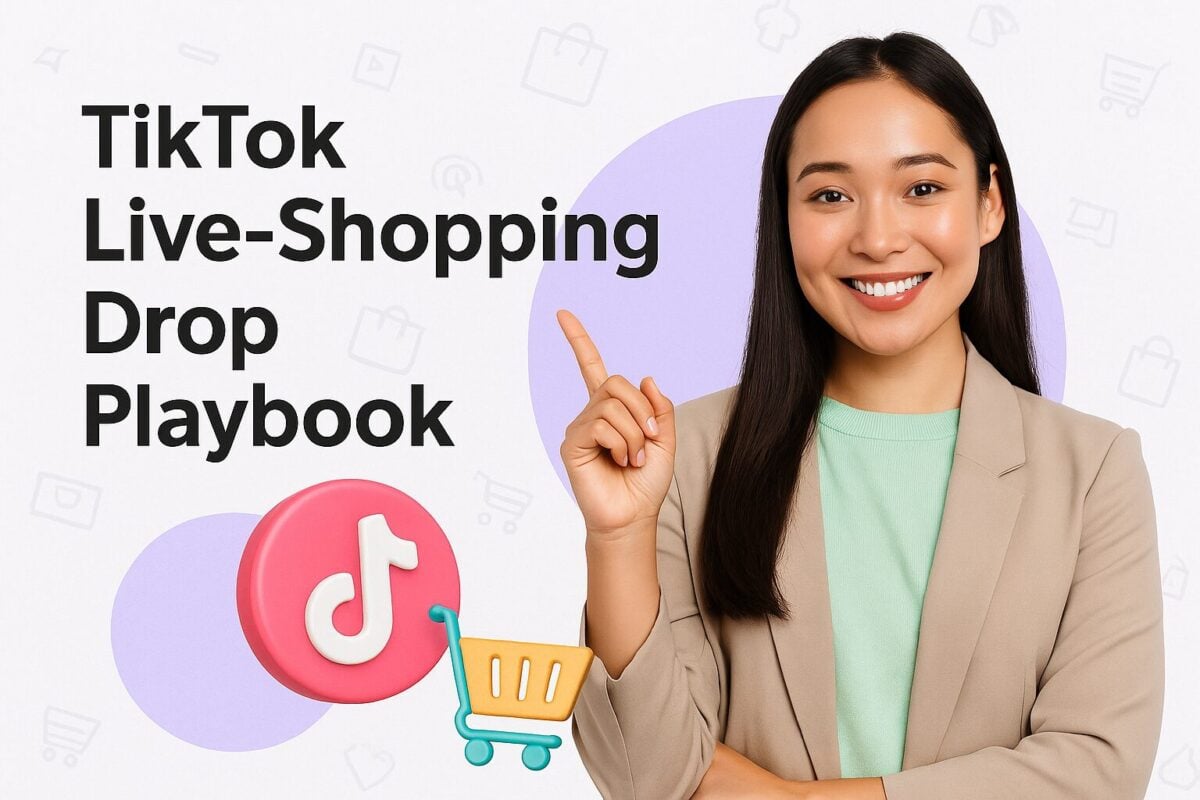Engagement has become the holy grail of Instagram for businesses and individuals looking to monetize their social media presence. The more the platform grows, the more users like, follow, share and tag other users, the easier potential customers are able discover businesses. Many small businesses as well as big celebrities have found success in skillfully engaging their followers on the Gram and so doing marketing their businesses using the platform. With more than 4.2 billion photos liked every day and 50 billion posts shared to date, you want to get in on that action.
Now, Instagram has revealed the latest in a series of innovations aimed at increasing user engagement. After it was initially spotted in testing back in February, Instagram officially launched its new Quiz Sticker for Instagram Stories in April 2019. The interactive quiz feature allows users to engage with their followers by asking them multiple-choice questions.
With the popularity of Instagram Stories skyrocketing (In January 2019, it grew to more than 500 million daily users) and with businesses increasingly looking for tools to increase engagement with their brands without having to make massive investments in creative content, the new sticker will undoubtedly be a godsent.
So, how can Instagram's quiz stickers help you market your business? With half of all businesses on Instagram having produced at least one story in the last month, it looks like businesses are already using this tool to the fullest. Research has shown that visual content is especially potent, because people remember 80% of what they see, compared 20% of what they read and 10% of what they hear.
While generating leads and driving traffic is difficult with its lack of links, Instagram Stories is an amazing platform for displaying your company’s culture and brand.
Interesting read: 10 apps for creating beautiful Instagram Stories.
Let's start with the basics and walk our way through the benefits of using quiz stickers, Instagram's latest exciting feature to boost engagement.
Starting today, you can use the new quiz sticker in Stories to ask your friends and followers a multiple-choice question. See how well your friends know you. ?? pic.twitter.com/a6y1PaOnSY
— Instagram (@instagram) April 23, 2019
Instagram Quiz Stickers: How They Can Help Market Your Business
How do Instagram Quiz Stickers work?
The new quiz sticker, not to be confused with the questions sticker, is very simple to use. The difference between quiz and question stickers is that the former lets users ask followers questions while questions lets followers ask an individual who they follow a question.
The quiz stickers can be added to Instagram Stories by tapping the sticker icon after you've started a new story. Select the quiz sticker option from the sticker tray. Decide on your multiple-choice question and customize the answers. You can choose up to four answers and as few as two. Tap on the right answer and share it to your Instagram story.
Once live, people can respond by tapping one of the options you've provided. After they've voted, your followers can also learn whether they got it right. If they answered correct, they’ll get an immediate green response on their answer and a ticker-tape animation to celebrate. If they got it wrong, they will see their response marked in red and the correct answer highlighted. When someone takes your quiz, they will also see the choice with the leading responses at the top. This gets updated if they watch the story again.
When you view your story and swipe up, you can see how many votes each option received and how each person voted. So, you can see that the possibilities for marketing here are endless.
PRO TIP: Customize the color of your quiz by tapping the color wheel at the top of the screen to choose a different color that matches your background or your business' brand.
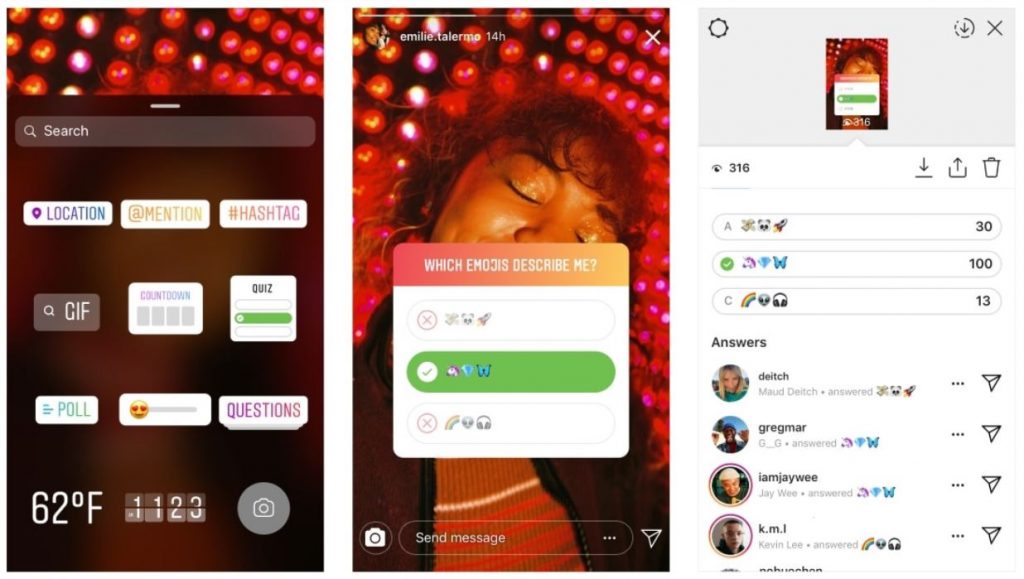
Image via Instagram
Increase engagement with your content
When a user interacts with one of your stories it sends a signal to Instagram’s algorithm. This signal is then used to rank your stories higher in the user’s story carousel. The more engagement you get, the higher your stories will rank. Getting your followers to not just view your content, but to also interact with it, is therefore key to reaching a greater percentage of your followers.
In terms of engagement, quiz stickers really are ingenious because it combines three elements that make it irresistible for users to answer. Firstly, Instagram Stories disappear after 24 hours. The fact that the quiz will only be there temporarily therefore adds a sense of urgency to users who comes across it. Secondly, there's a reason why they say curiosity killed the cat. People are by nature curious and want to know what the right answer is. Most people are also naturally competitive and want to know whether they can get the answer right. This combination was already used with Instagram's poll stickers, which launched in 2017. In reality, the quiz sticker is very similar but adds a more fun, competitive element. By allowing users to get the answer right you let them feel a sense of achievement which is much more satisfying than the feedback a poll gives.
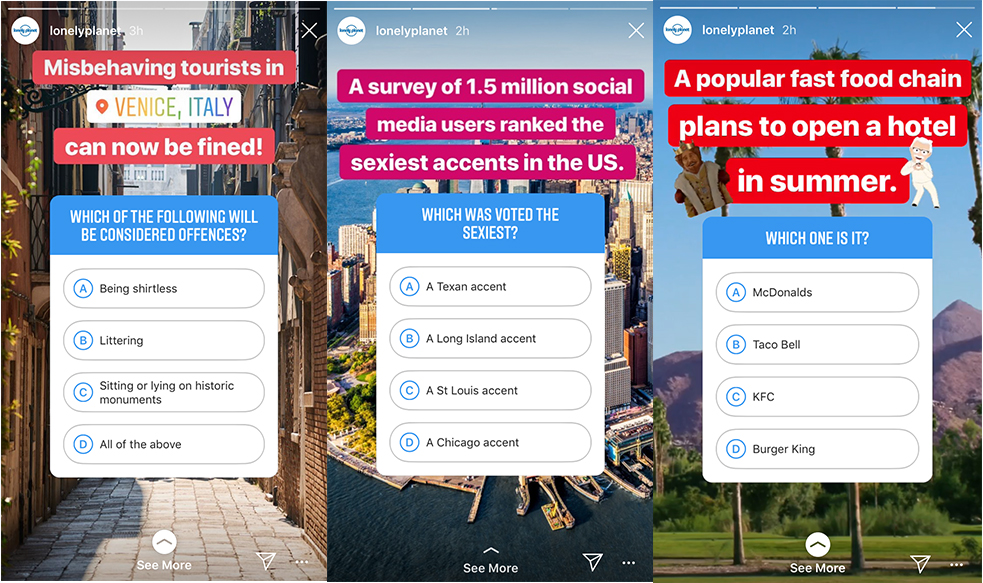
Image via Instagram
Get business insights
For small businesses who can’t afford expensive market research, this is a great feature. By asking the right questions, you can get a good idea of what your followers and fans' preferences are when it comes to your products or services. Where the 'Ask Me Anything' sticker is great for letting your followers ask questions about your brand, your personal life (if you want to share), or useful information that you are an expert on, the quiz sticker allows you to ask targeted questions to gather important information about users' perception of your business. For instance, if you are a beauty blogger, you could ask, 'How do you prefer me to do beauty reviews?' with answers:
- Short story reviews
- Live streams
- Give us a link to your blog
This will give you a direct answer to a question that could make a huge impact in the way your business distributes its service. Similarly, you could ask users about changes you are considering to a product, what time of day they prefer to see posts from you, how they perceive you compared to your competition, etc. While it might not be a scientific way to do market research, it is a great option to gather crucial information to customize your product if you're a small business or start up and don't have money to do in-depth market research.
It's also a handy way to find out how well your fans know you, your business or your brand if you ask them questions that only a true fan will know.
Educate users about your business
Quiz stickers can also be used to help your audience get to know you and your business. Asking questions specifically related to your business can educate your followers, and help you discover who your biggest fans are. There's a million ways this could benefit you. For instance, if you're the owner of a coffee shop, you can ask, 'What's our customers' favorite drink?' with answers:
- Americano
- Cappuccino
- Latte
This way, you're letting your customers and potential customers know that, for example, your latte's are a real hit, and thus, which drink they should order when they visit you next time.
One brand that does this really well is General Electric (GE's), who often experiments with new features on Instagram. Being in a highly technical and mechanical industry, you wouldn't think GE's Instagram would be all that interesting. But they've found a way to simultaneously educate and entertain their followers using different stickers, the latest of which being quiz sticker. Another brand that uses this well is Nasa, which relays fascinating information about space to its followers on Instagram.
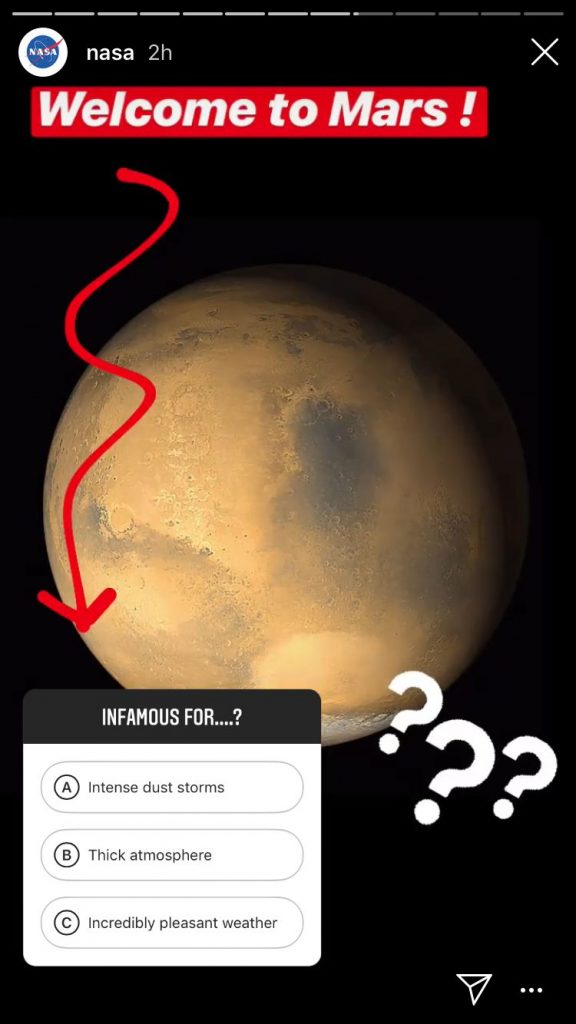
Image via Instagram
You could also use the quiz as a lead-in to a new research report. For example, you can lead in your first story frame with a quiz question, then add a 'Want to learn more…' swipe up link in the next.
Similarly, if you have a social responsibility arm to your business, you can use the quiz sticker to educate your followers about this and spread the word about the importance of your cause. Research shows that nearly 95% of students say they are less likely to ignore an ad that promotes a brand's partnership with a cause, so this is a great way to promote your business and does not have to cost a lot of money.
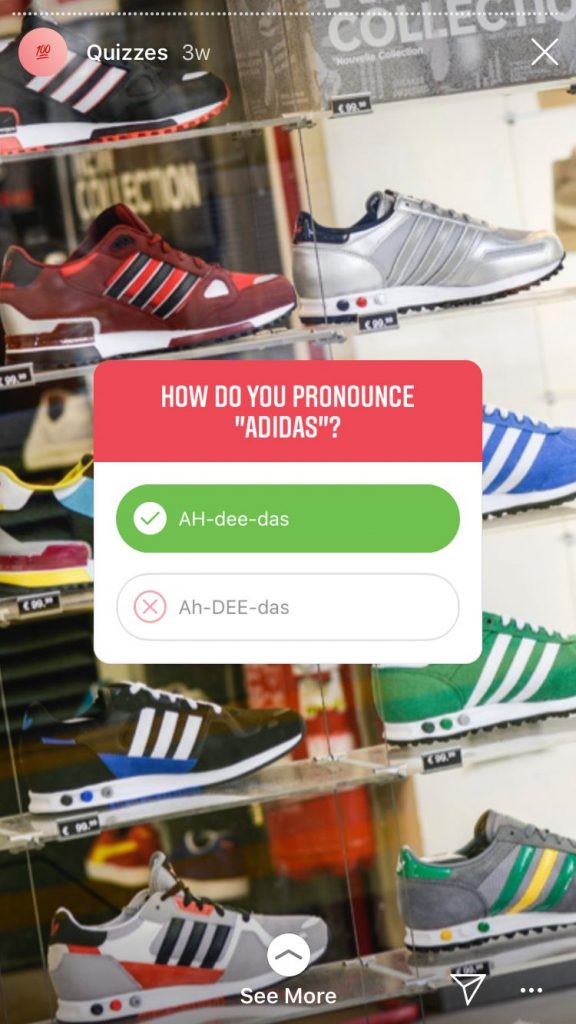
Image via Instagram
Run promotions
The quiz sticker is a useful way to build excitement around new campaigns and product launches, as well as promotions you may be running. One way to do this is by offering a deal or voucher to those who answer correctly. Announce it as a mini-competition and say that you’ll DM users the code if they guess correctly. This is fun and so much more engaging than just posting a discount code to your profile, which means you will get double the value from your promotion.
Another way to share your latest promotion is to ask location-based questions for fans such as: What should we choose for the featured drink of the week? What’s our latest half price offer? You’ll get to engage your audience while learning about what they like.
UGC and quiz stickers
Many brands already use user-generated content to create more engagement, especially in their Instagram Stories where posts only last 24 hours before they disappear, therefore not permanently reflecting on a user's profile. Asking followers to send you pictures of certain locations and making others guess where that is (if you're a travel brand) or asking followers to photograph all the ingredients to their favorite dish and asking your followers to guess what they're preparing (if you're a food blog or brand) is a great way to combine UGC and the quiz stickers. That's double engagement gold for your business.
More tips
If you run out of ideas or quiz questions, Instagram has some suggestions for you. Tap the “dice” at the bottom of the sticker and you’ll receive random prompt suggestions like these:
Guess my favorite show …
What’s my biggest fear?
What would I name a pet turtle?
If I were a musician, I’d be…
What makes me happiest?
If I were a celebrity, I’d be…
Only one of these is true…
However you use it, these quiz stickers are a creative way to engage with your audience via Instagram Stories.
ICYMI
If this is your first encounter with Instagram Stories stickers, here is a catchup of all the other stickers that may be useful to promote your business by increasing the level of engagement of your followers. You can use different stickers to make your page more user friendly and improve the customer experience.
Other stickers available include:
Questions sticker allows your followers to ask you a question (similar to quiz stickers, but allowing followers to ask you a question, instead of the other way around – very useful to build a relationship with your followers by letting them get to know you).
Music stickers allows you to search for a song that goes with your Instagram story.
Countdown stickers count down to any moment you choose and will send notifications to you and everyone who turned on reminders for your countdown (this is a great way to build anticipation and excitement for a new product launch).
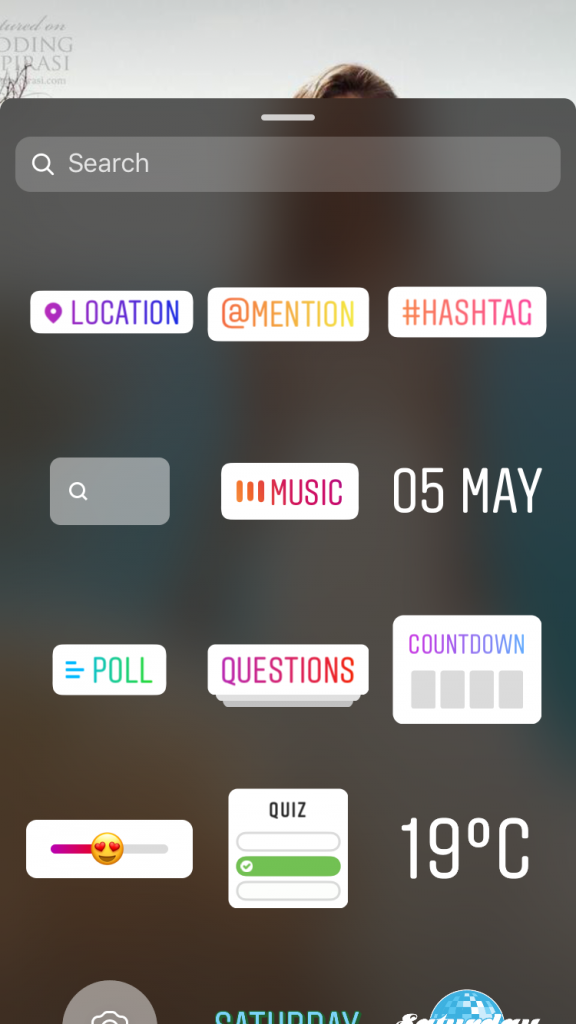
Image via Instagram
Hashtag stickers take followers to the page for the hashtag they entered.
Location stickers make it possible to tap the sticker and view the page for that location when people see your story.
Time or weather stickers use the data available from your device and based on your location to add this information to an Instagram story.
Poll or slider stickers for writing questions with customized answers. Your followers can answer by choosing one of your responses or sliding an emoji you have selected (these two have the same benefits the quiz sticker has and is great to increase engagement).
Frequently Asked Questions
How do you get the quiz stickers on Instagram?
The new quiz sticker, not to be confused with the questions sticker, is very simple to use. The quiz stickers can be added to Instagram Stories by tapping the sticker icon after you've started a new story. Select the quiz sticker option from the sticker tray. Decide on your multiple-choice question and customize the answers. You can choose up to four answers and as few as two. Tap on the right answer and share it to your Instagram story.
What is the quiz sticker on Instagram?
The new interactive quiz sticker feature on Instagram allows users to engage with their followers by asking them multiple-choice questions. The quiz stickers can be added to Instagram Stories by tapping the sticker icon after you've started a new story.
What are the Instagram quiz filters?
The new interactive quiz sticker feature on Instagram allows users to engage with their followers by asking them multiple-choice questions. It’s the latest in a series of innovations aimed at increasing user engagement.
Can you increase my Instagram quiz?
To use Instagram’s new quiz feature, follow these steps:
Start a new story
Tap the stickers option on Instagram stories
Decide on your multiple-choice question and customize the answers.
You can choose up to four answers and as few as two.
What should I ask for on Instagram quiz?
Here are some sample questions to use for Instagram quiz:
How long have I been on Instagram?
Guess how much time I spend on Instagram every day
Guess my favorite Instagrammer
Which photo should I post next?

